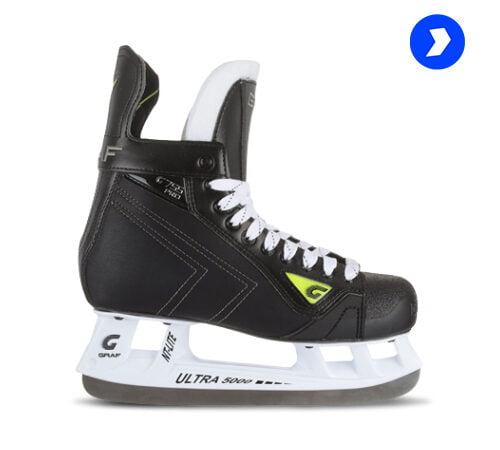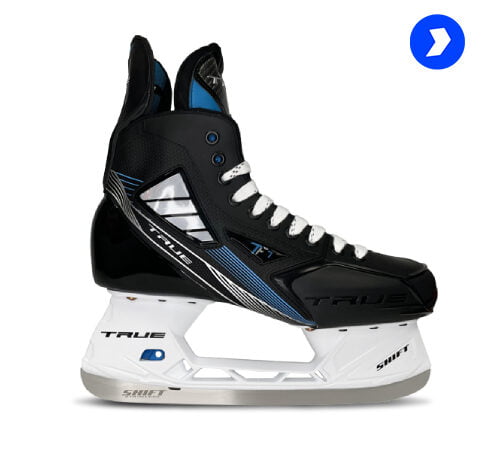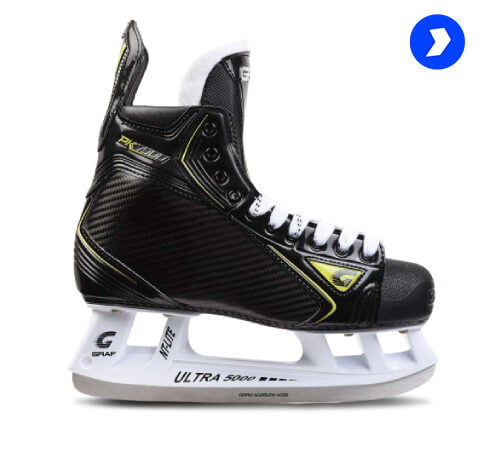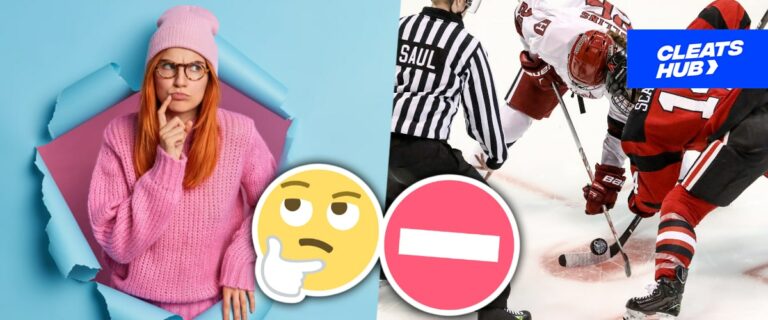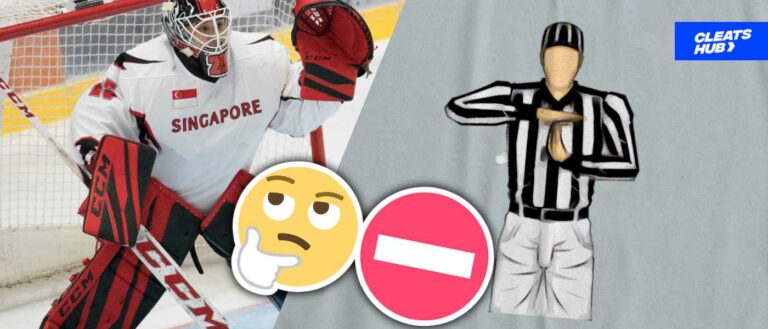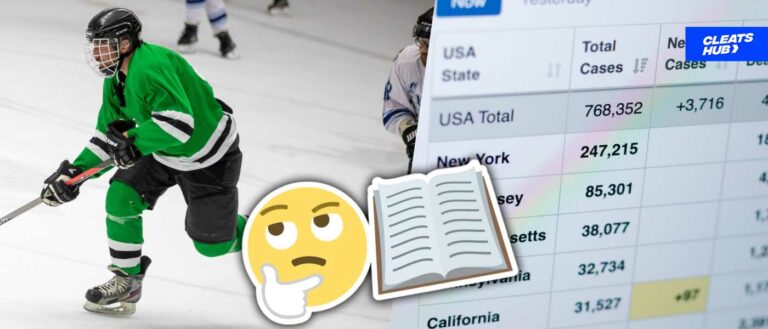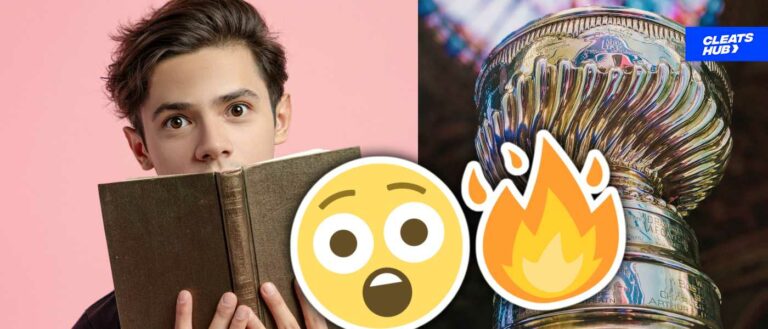What Is Ice Hockey? History, Origin & Rules
Ice hockey has become a well-known sport around the world, with several people taking a liking to the nature of the game. The sport is among the top 10 most watched sports in the world (taking up the no.6 spot) and has about 1.6 million registered athletes.
It is densely popular in Canada, and it also has a great reach in the United States, Russia, Finland, and Sweden. Currently, there are many ice hockey leagues all around the world, with the most popular being the NHL.
But what is ice hockey, how is it played, when was it invented, what are the rules of the game, and what is the purpose of the game? We’ll be going through this and so much more in this article.
Where Was Ice Hockey Invented?

Ice hockey has a long history. Yet, the first indoor ice hockey game was played on March 3, 1875, in Montreal, Quebec, Canada. It was played on the Victoria Skating Rink in Montreal between two sets of nine players.
James Creighton (a lawyer, engineer, journalist, and athlete) and students from Canada’s McGill University were among the participants that up the teams. This is also the first time a flat disk-shaped wooden substance will be utilized as the ball. This was later dubbed the puck.
The university’s games were played under the regulations of the Hockey Association, and subsequently, in 1877, the university established the McGill University Hockey Club. Eventually, the Quebec Hockey Club and the Montreal Victorias were formed.
The number of players on the rink from each team was eventually reduced from nine to seven, and in 1883, the ice hockey teams in Montreal grew large enough to host their first-ever Hockey World Cup.
The tournament was held during the Winter Carnival in 1883. The game was split into two thirty-minute halves at the time.
Five years later, Lord Stanley of Preston and his family attended their first ice hockey game during the Winter Carnival in 1888. Following that, the Montreal Hockey Club was awarded the inaugural Stanley Cup (previously the Dominion Hockey Challenge Cup) in 1893.
In 1910, the National Hockey Association was created in Montreal, and they would reform the game clock system. It switched from two thirty-minute halves to three 20-minute periods. Furthermore, not long after the NHL was created, ice hockey’s popularity began to rise.
How Is Ice Hockey Played?
Ice hockey is played in a certain style, like many other sports around the world. They range from the playing field to the tools, settings, and officials. Local hockey is simple to play if you are trained and guided, just like any other sport. Nonetheless, professional and expert athletes can only be found in advanced leagues.
Below are a few things that have to do with the sport of ice hockey.
The Hockey Rink
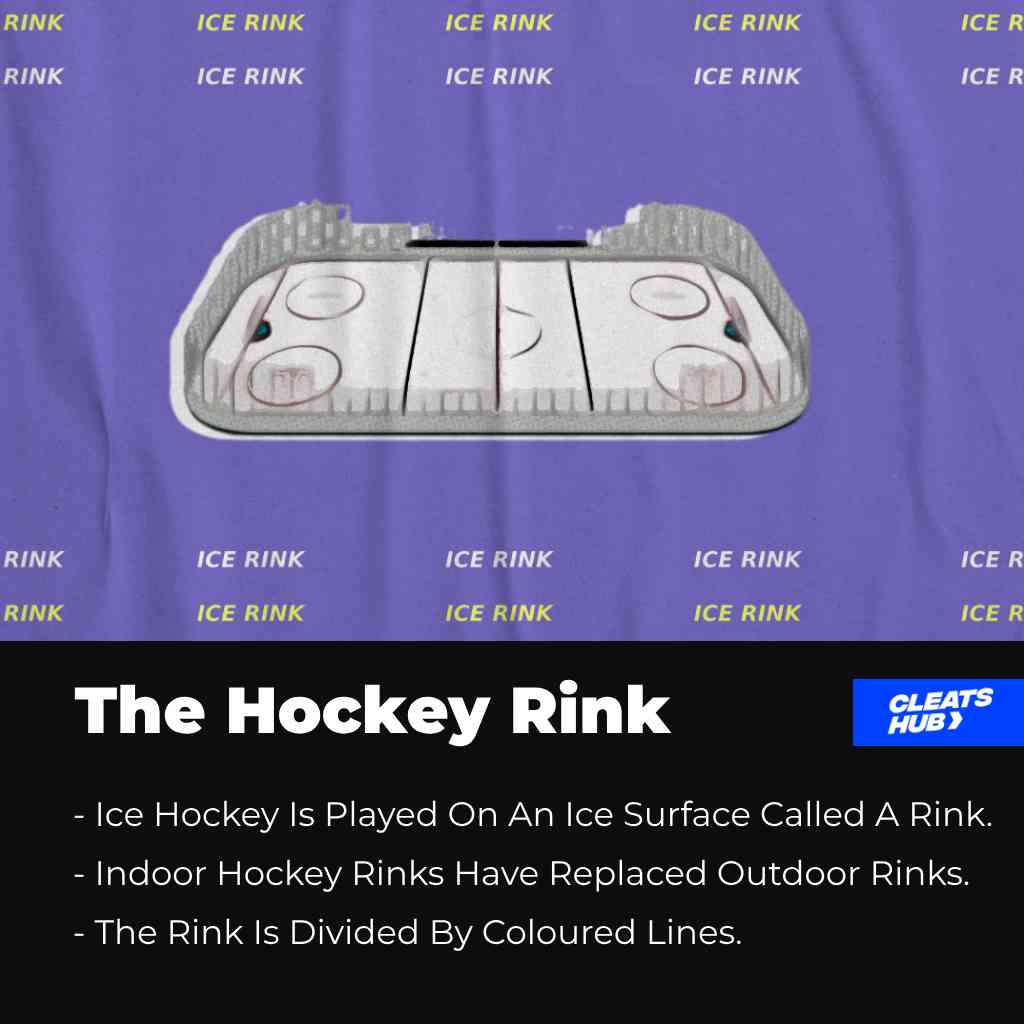
Unlike other sports, ice hockey is not played on regular sports surfaces. It is played on ice, just as it is implied in the name (ice hockey). An ice hockey rink is an area designed for the game of hockey.
Although outdoor ice hockey rinks were initially used, indoor rinks eventually replaced them. The majority of recreational hockey as well as professional hockey are currently played on indoor rinks.
In order to navigate the slick ice surface throughout the game, players use a pair of skates. Also, the NHL, North America, and international rinks have distinct hockey rink dimensions.
The NHL uses rinks with dimensions of 200 feet by 85 feet. However, international rinks are 60 meters by 30 meters in size (196.85ft by 98.42ft).
Lines drawn on the ice help to separate the ice rink into several areas. A hockey rink’s two colors are blue and red. The “red goal line” and “red center line” are defined by the red-colored lines. However, blue lines are what make up and denote the offensive, neutral, and defensive zones.
There are also other shapes on the ice, including the trapezoid, the nine faceoff locations, five faceoff circles, the hash markers, and the goalie’s crease.
Transparent plexiglass is the material that encloses the hockey rink. This is done in order to shield spectators from the high-velocity puck that is fired within the rink.
Equipment Of Ice Hockey
The equipment ice hockey players use to play the sport ranges from the heavy gear that they wear to what they use to play the game. The heavy body gear in hockey is more because, unlike other sports, the amount and intensity of physical contact are greater when compared to other sports.
The materials ice hockey players wear as body gear include:
- Helmet
- Jersey
- Padded Shorts
- Skates
- Gloves
- Mouth Guard
- Shin Pads
- Shoulder Pads
- Jockstrap
- Elbow and Knee Pads
In ice hockey, the puck is the primary object of play, and it is played with a stick. The practice of taping sticks is common among ice hockey players because it improves their control of the puck and lessens the likelihood that it will slide off the surface.
Goalies in the sport use bulkier and more protective gear than average skaters do. The goalies take consecutive shots from the puck, which is why. They must therefore be adequately shielded to prevent injuries when they are protecting the net.
Ice Hockey Teams
A hockey game’s fundamentals are as follows:
There cannot be a game without a team of players. A game of ice hockey also starts with the presence of two teams. Moreover, just as a game cannot be played with just one team, neither can an ice hockey game be played with more than two teams.
One goalkeeper and five skaters make up each team’s six-player roster. More than six players from each side are not permitted to be on the ice at once. However, this number may be lowered due to penalties or injuries.
With several ice hockey leagues around the world, there are several teams that make up these leagues. The table below shows some of the most popular ice hockey leagues and the number of teams they have.
| Ice Hockey Leagues | Number Of Teams |
| National Hockey League (NHL) | 32 |
| Kontinental Hockey League (KHL) | 22 |
| Swedish Hockey League (SHL) | 14 |
| Liiga | 15 |
| Czech Extraliga (Tipsport Extraliga) | 14 |
| Deutsche Eishockey Liga (DEL) | 15 |
| American Hockey League (AHL) | 32 |
| Ontario Hockey League (OHL) | 20 |
Coaches And Managers
The management and coaches are part of ice hockey teams in addition to the players. Outside of the ice-rink games, the management and coaches work together as a unit. In addition to deciding on player drafts, trades, and waiver claims, they are also in charge of formulating game plans, contracts, drills, and all other off-ice club and player management choices.
The managers make sure that the players’ and club’s welfare is taken care of. Along with overseeing the operation and management of the club’s affairs, they also deal with player-club talks.
The creation of strategy and tactics, as well as the improvement of players’ skill sets, fall within the purview of coaches.
Officials Of The Game

In professional hockey games, there are two types of officials: the referee and the linesman. There are always two referees and two linesmen on the ice rink at all times.
They are both dressed in black pants with white and black-striped clothing. Since they wear the same type of outfit, it may be a bit hard to differentiate them; however, unlike linemen, referees have an orange band on their arm.
The purpose of the four officials in the official game is that the game is very fast and just one or two officials might not be able to keep up with the movement of players and the puck. This is especially true for professional leagues such as the NHL.
The officials identify penalties and misconduct in the game and allocate the right punishment as stated in the rule books. Also, in cases where there are uncertainties about the infraction by a player, the officials deliberate among themselves and come to a final conclusion.
How Many Players Are In An Ice Hockey Team?
Each squad has six players. There are five active players, sometimes known as skaters and one goalie.
These five players are grouped into two groups: forwards and defense. The forwards are in charge of attacking, while the defense protects the goalie and prevents team goals.
Players And Positions In Hockey

There are four main positions in ice hockey. These positions have specific roles and duties they perform in a match. They coordinate and act as one body to ensure that they attain the goal of any match: to win.
The ice hockey positions include:
- The Forwards:
The forwards are the attacking formula of every hockey team. They are made up of players skilled in shooting accurate shots and coming up with quick, decisive, and wise genius game-making decisions while in the offensive zone. There are three players who take the forward position in hockey. They are the right-wingers, the left-wingers, and the center. - The Centerman:
The centermen are the players that ensure the continuous flow of the game. In addition, there is only one centerman on the ice at any time of the game, and they act as the sustainer and maintainer of the game’s flow by ensuring they assist the defense and offense. - The Defensemen:
Next on the ice are the defensemen. The defensemen are the protectors of the net and the line of defense that stops the opposing team from going one-on-one with the goaltender. The defense is also made up of two players taking both sides of the ice in their team’s defensive zone. Their task is to intercept the puck before it comes too close to the goalies and send it to a player in the offensive or neutral zone. - The Goaltender (Goalie):
The goaltender (often called goalie) is a player in ice hockey responsible for guarding the net and ensuring the puck does not enter his net. The position of the goalie can be considered one of the hardest in ice hockey. This is because a goalie’s skill only gets better with time, unlike other positions in ice hockey.
Aim And Objective Of Players In Ice Hockey
The basic goal is to win, similar to many other sports played around the world. Ice hockey, fortunately, is no different. The goal of each player and team in ice hockey is to win the match. In addition, the team that has scored the most goals by the game’s end is declared the champion.
Each member of a team therefore strives to cooperate with one another in order to score as many goals as possible during games. Teamwork and unity are required for this project.
Scoring System In Ice Hockey
Ice hockey uses the same scoring system as football. A goal is awarded whenever the puck is shot into the opposing team’s net without their goalie being able to catch/stop it.
This differs from basketball, where buckets inside the 3-point arc are for two points, and buckets outside the arc are worth three points. As a result, if two players score one goal each, the team receives one point for each goal, regardless of where or how the shot was taken.
In the event of a tie at the end of regulation time, overtime rules apply, and if a winner is not determined, the tie is resolved by a shootout. This is because ice hockey games cannot end in a tie; a winner must be determined.
However, how clubs are rewarded points in the team standings varies depending on the league. Further information can be found at How Do NHL Standings Work? Guide to the Points System.
Fundamental Rules And Regulation Of Ice Hockey
The rules of any sport are the laws that govern the affair of the game from how it is played, to the punishment given to offenders and what is classified as an offense. In this section we will be looking at two of the important parts of the game; the clock rule and the penalties.
Timing And Clock Rule

In ice hockey, the clock rule simply refers to the component of the game that deals with the time allocation system and game duration. This is extensively used in hockey and its leagues, though there may be some variances from league to league.
The three ice hockey time systems are not employed in every game and are dependent on how the game unfolds. When a game concludes in a tie, these extra time mechanisms in hockey are activated.
Ice hockey games cannot be tied. As previously stated, a game can only conclude in a win for one team and a loss for the other team. As a result, additional game allocation procedures such as overtime and shootouts were implemented.
Regulation Time
Ice hockey’s “regular game time” is known as the “regulation time.” A game of ice hockey lasts for the entire 60 minutes of play. Regulation time is the name given to the regular 60-minute playing period.
There are three 20-minute intervals throughout the regulation time. To ensure the performance and framework of a smoother game, the ice surface will be cleaned as a result.
If a winner cannot be determined after regulation time has ended, overtime is the following step.
Overtime
Ice hockey’s overtime rule gives teams an additional five minutes of playing after regulation time to try to resolve any ties that may have existed during regulation. The squad of the first goal scorer in overtime, as opposed to regulation time, is thought to have won the match.
The game ends instantly for the team that scored the goal, even if overtime has only just begun. During the NHL regular season, only one overtime period is awarded. If a winner does not emerge before the end, then the game proceeds to a shootout.
However, during the NHL playoff season, the overtime period is 20 minutes. At the end of one overtime, if a winner is not gotten, then another overtime period is given. This is because shootouts are not a means of ending ties during the NHL playoffs.
Shootout
If a winner cannot be determined after overtime, shootouts are the final tiebreakers used to determine the winners in ice hockey. In contrast to regular games, only one player moves the puck from one end of the rink to the other in a shootout in order to face the goalie one-on-one.
The player will only get one chance to put the puck in the back of the net. One at a time, a player from each round is called to participate in the shootout (if Team A takes one, Team B will take one). When one team prevails in a shootout without the other team matching the scores, that team is declared the winner.
Infractions And Penalties In Ice Hockey
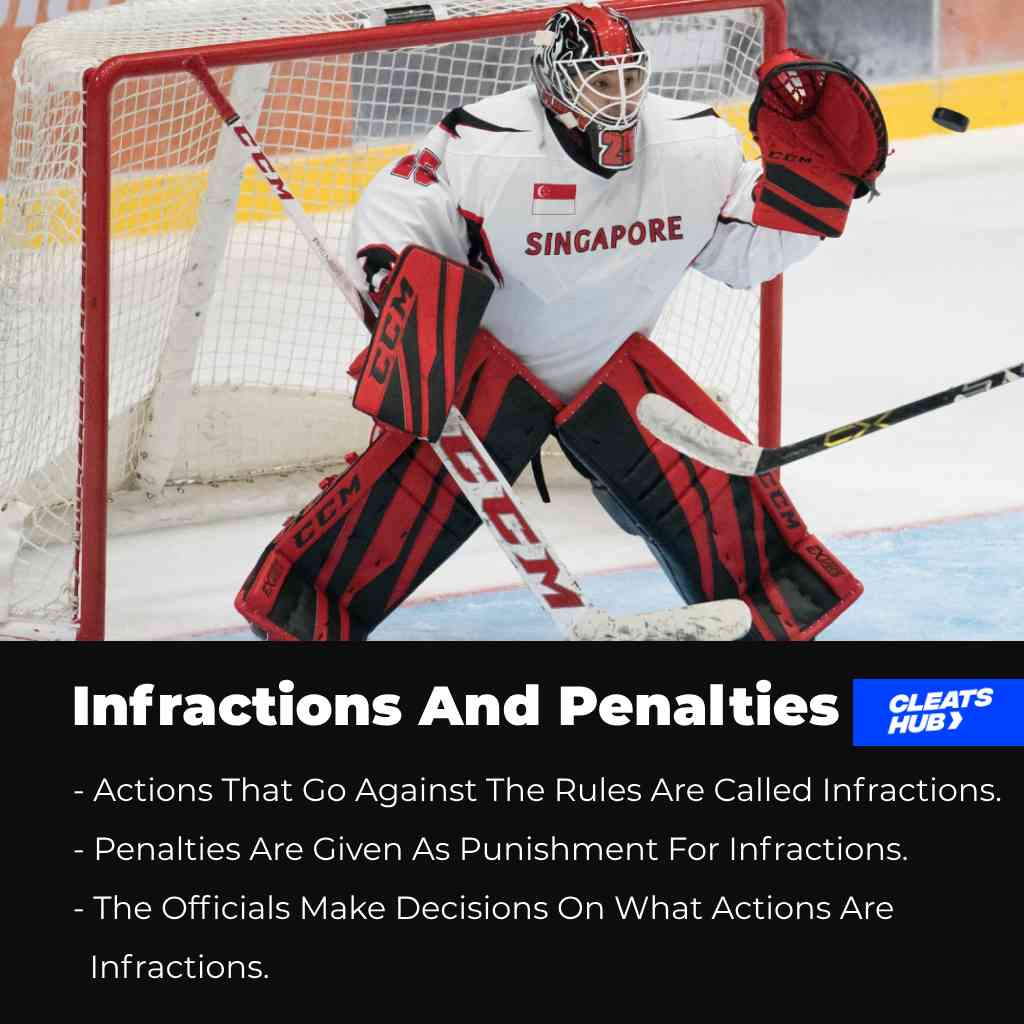
Ice hockey has its set of rules and regulations that surround what it considers an offense or infraction. An infraction in ice hockey is an action committed by a player that goes against the rules of the sport.
The referee and linemen halt play when a player commits a violation, and the offender is then given the proper punishment (also known as a penalty). Notice that the term “penalty” in ice hockey differs from that used in football (soccer).
In soccer, a penalty is when a player is given a one-on-one shot with the goalies in a spot inside the penalty box. However, in ice hockey, a penalty is the punishment given to a player for committing an infraction.
In ice hockey, there are several kinds of penalties. Based on the different hockey offenses, each of these penalties is divided into a category. The severity of the offense also affects this. Based on their initiative and perception, the referees in ice hockey have the last say in what the punishment for an offense should be.
To know more about the various types of penalties in hockey, read this article “What are the types of penalties in ice hockey?”.
How The Game Works
In hockey different strategies and tactics are used by a team in both offense and defense. The defensive tactics are to stop the advancement of players from the opposing team as they work their way to a goal.
In ice hockey, checking is an important defensive tactic. In hockey, checking may take many distinct forms. Included in these are forechecking, stick checking, sweep checking, and poke checking.
The main role of checking is to dispose of a player from the puck either by moving the player, the player’s stick, or the puck from the player’s possession.
Body checking is one checking tactic that is not generally accepted in all hockey leagues. This is because it is found to inflict injuries on players. In other leagues, there are limits to actions that are accepted as body checking.
Another strategy in hockey is the offensive strategy. While the defensive strategy focuses on protecting the net and the goalie, the offensive strategy focuses more on drilling through the opposing team’s game structure to score a goal.
A multitude of techniques are used in offensive plans, just like in defense, including one-timer shots, decking, loafing, pulling the goalies for an additional attacker, pinching, and many others.
All of these have their advantages and situations when they tend to work best. In summary, the purpose of all of these strategies and techniques is to score goals, prevent goals against your team, and ultimately win the game.
Leagues, Tournaments, And Games In Ice Hockey

Sports leagues are one method of developing a professional player system, and ice hockey has its own set of leagues. Hockey leagues allow professional players to exhibit their skills against other good players in the league.
Leagues also have organized team structures, game allocation methods, revenue systems, player contracts, and other incorporations to help make and support hockey as a full-time job.
Aside from leagues, there are also the Ice Hockey World Championship and the Olympics. The Ice Hockey World Cup is an international competition in which each country organizes its finest players to compete against other countries.
It has lasted many years after it began in 1920. The Canadians have won the championship the most times, 28 times since its start. The International Ice Hockey Federation organizes the championship each year (IIHF).
How Many Leagues Does Ice Hockey Have?

There are a lot of ice hockey leagues in the world currently, from major leagues to collegiate, junior, national, minor, or just amateur leagues.
The National Hockey League
The National Hockey League (NHL) is the biggest ice hockey league in the world. Not only is the NHL big, but it is also the most popular and most revered league. Additionally, it boasts the oldest professional sports trophy in North America – the Stanley Cup.
It is also a significant ice hockey league with the greatest number of professional clubs, national representation from all over the globe, the largest income of any ice hockey league, the highest value of player contracts, and much more.
The NHL is also seen as the biggest ice hockey platform in the world. You can also read “Who is the best NHL player in history”.
The American Hockey League
The American Hockey League is a United States-based ice hockey league. It is referred to as a minor league in North America and it is affiliated to the NHL. The AHL is also a professional hockey league with thirty-two teams (the same as the NHL).
Six of the thirty-two teams are in Canada, and 26 are spread across the United States. NHL teams frequently delegate players to the AHL, which is their team’s minor league affiliate.
Conclusion: Some Ice Hockey Players
There are a lot of superstar players in ice hockey over the years. However, some of the most popular ones are from leagues like the NHL. When we talk about renowned ice hockey players, the names that come to mind include:
- Wayne Gretzky
- Mario Lemieux
- Bobby Orr
- Gordie Howe
- Sidney Crosby
- Alexander Ovechkin
- Connor McDavid, and much more.
This brings us to the end of this exciting article. I hope you have learned a lot about the history and workings of ice hockey. If you are interested in the game, you can give it a try and even visit ice hockey stadiums to see your favorite teams play.
Thank you for reading.
Psstt…. The Top Performing Cleats


